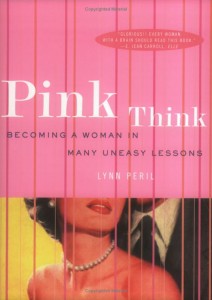note: I am in the process of cleaning up/expanding my blog. My first step is to finish up or delete past draft entries. The following began as a draft on October 11, 2010.
How do we learn to become aware of others? Why do some people (almost) instinctually act in ways that demonstrate an awareness and consideration of other bodies? How do we develop habits that compel us to always think about (or, if not think, at least act in accordance with) how our bodies exist/move in the world/connect/are in proximity to other bodies?
I was reminded of this set of questions this morning when I was waiting to get coffee at a local coffee shop. When I arrived to get a latte, there was a line. It was positioned in such a way that the people in line blocked the door and made it difficult for others to easily enter or exit. As with most coffee places, people usually wait in line right by the counter and don’t block the door. However, the door-blocking line had happened enough times at this coffee place that it made me wonder about lines at restaurants (and other public places) and why some people always seem to like to take up as much space as possible, regardless of its impact on any bodies around them.
Perhaps it is a misreading, but when I see people blocking exits and being oblivious to others I am often bothered by the sense of entitlement that these space-hoggers must have. How can they not pay attention to their surroundings? How can they not realize the impact of their bodies and actions on others? Because of my interest in virtue ethics and habits, I wonder about what repeated/habitual bodily practices space-hoggers do that have trained them to be so oblivious. And I wonder what needs to be done for them to break those habits. Could disrupting their space with subversive practices/subversive bodies be successful in enabling them to stop being oblivious and stop hogging space? Could they learn new habits, habits that trained them to be aware of all of the bodies beside/around them?
I don’t really have any answers to these questions, but I find thinking about how bodies exist in proximity to each other in coffee shop lines and how this connects to power, privilege and habit to be much more productive than silently stewing over how/why space hogs like to screw up lines just to piss me off.
In revisiting my reflection, having first started this draft last October, I am reminded of some recent discussions in my queer/ing ethics class about bodies in coffee shops. These discussions don’t necessarily directly connect to my own questions about space-hoggers, but I find myself wanting to put them beside each other (plus, that’s just how my brain works; I like to put a wide range of ideas next to each other and experiment with developing connections).
1. During our February 8th class, we watched a clip from the documentary, Unexamined Life, in which Judith Butler and Sanaura Taylor ponder the question, “what does it mean to take a walk?” At 2 minutes and 57 seconds in, Taylor describes what it’s like for her, as someone who is in a wheelchair and has limited use of her hands, to be in a coffee shop. Butler asks her, “Do you feel free to move in all of the ways that you want to move?” Taylor answers:
I can go into a coffee shop and actually pick up the cup with my mouth and carry it to my table. But then that becomes almost more difficult because of the normalizing standards of our movements and the discomfort that that causes when I do things with body parts that aren’t necessarily what we assume that they’re for. That seems to be even more hard for people to deal with.
I find it helpful to think about how both the space-hoggers in my experience and S Taylor inhabit and disrupt space (and normative behavior) in radically different ways.
2. In her notes for our class discussion, Raechel documents how we kept coming back to this Butler/Taylor clip and Taylor’s discussion of the coffee shop. Here’s just one excerpt:
What does it mean for her to use body parts in ways they weren’t “meant for.” What kind of visibility disruption is caused through her picking up a coffee cup with her mouth? Remy recollects an image from their past when they saw someone using their feet to do different tasks, such as eating, and remembering that they felt weirded out/grossed out by that. They then make the connection to gender and how others respond to their gender as a similar thing, and gender visibility does create space for actual change. Remy challenges the word “individual” and prefers word “solo”–Sanaura’s act impacts other people; it’s not just about her. Liora points out that coffee is treated as a basic human need. Some agree that it is. : )
3. Months later one student in the class, @Mel4queer11, posted the following tweet:



